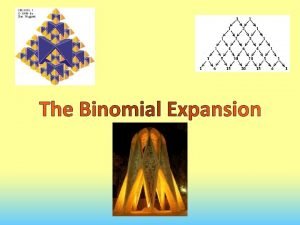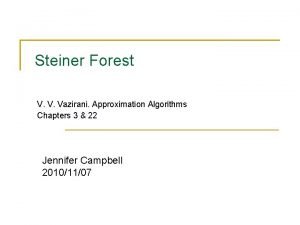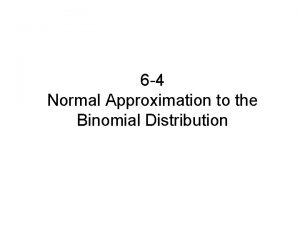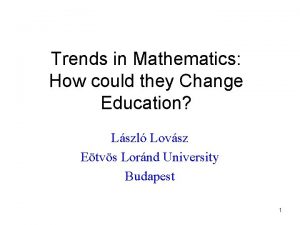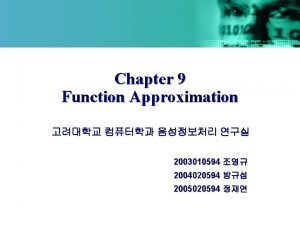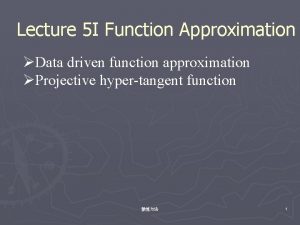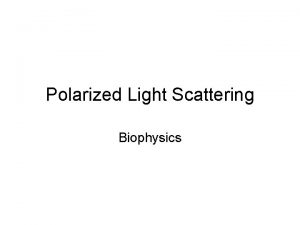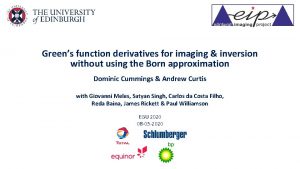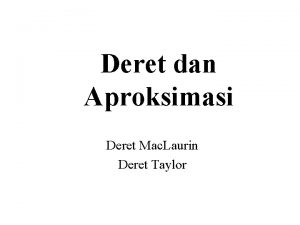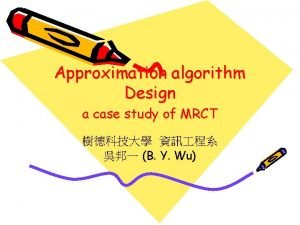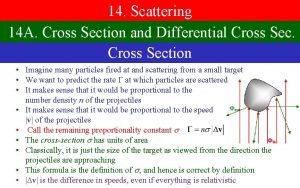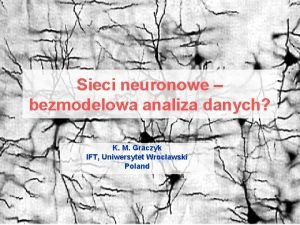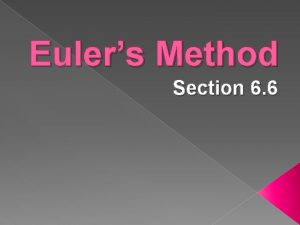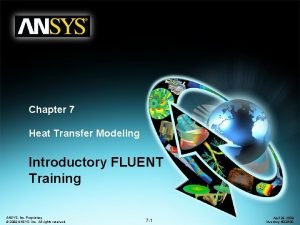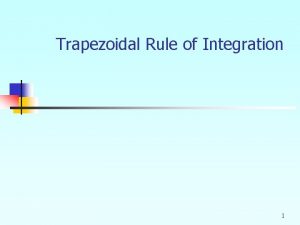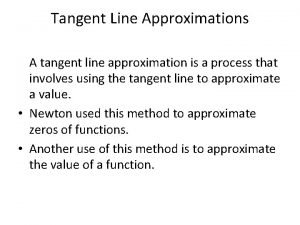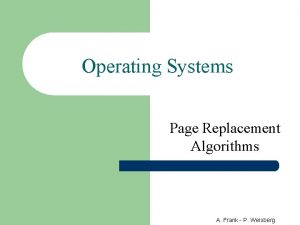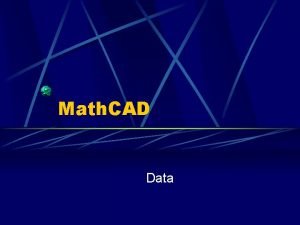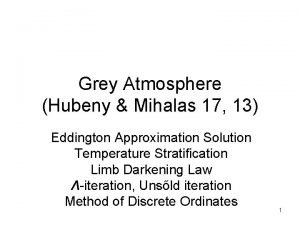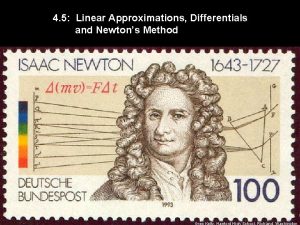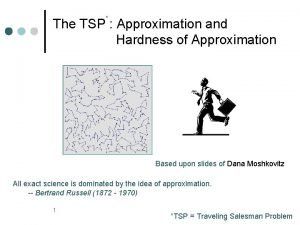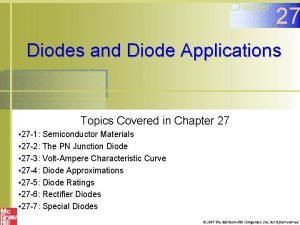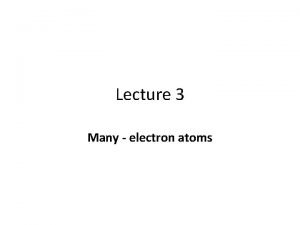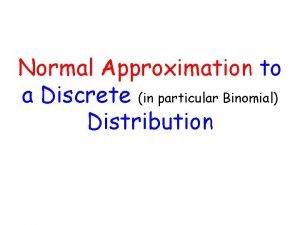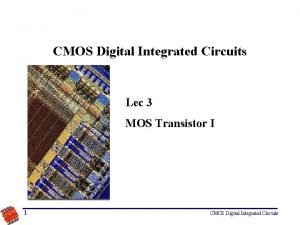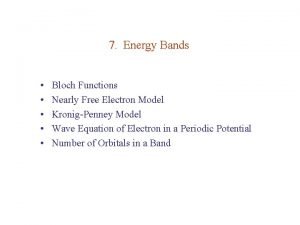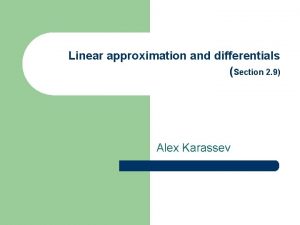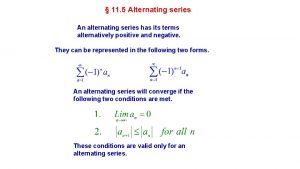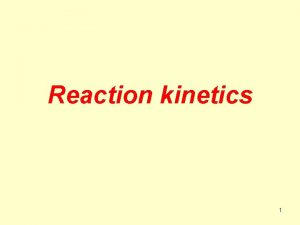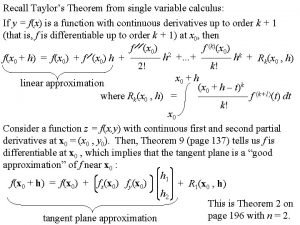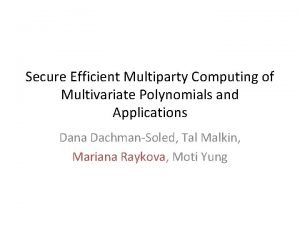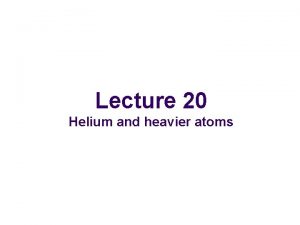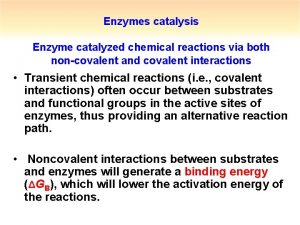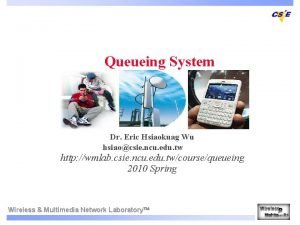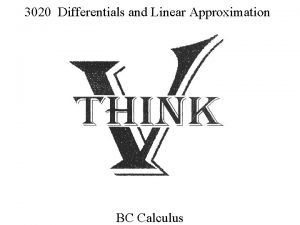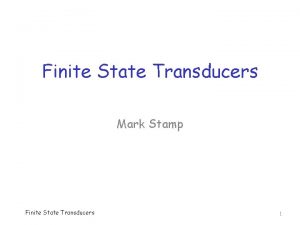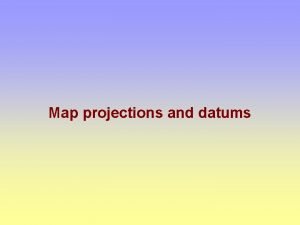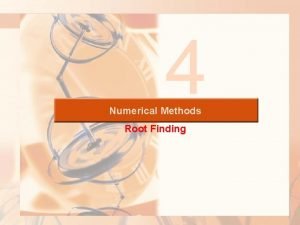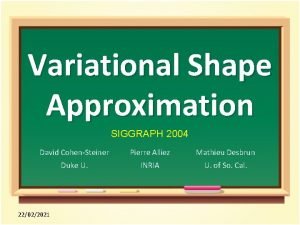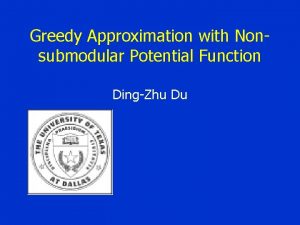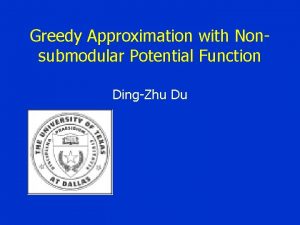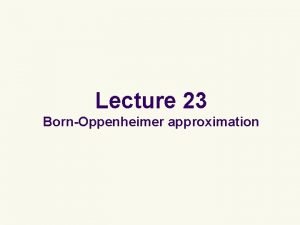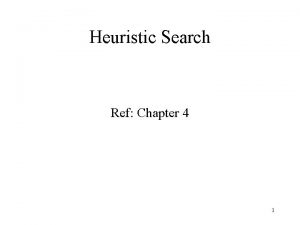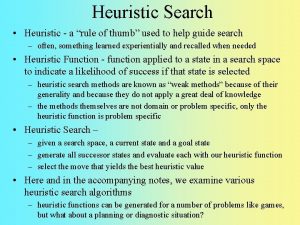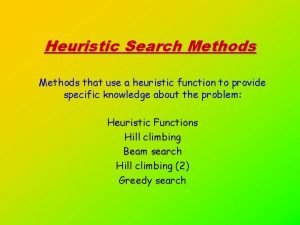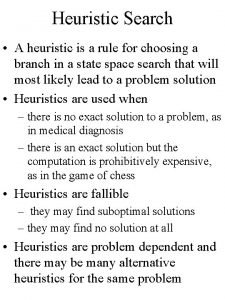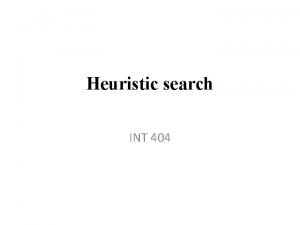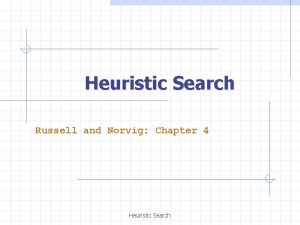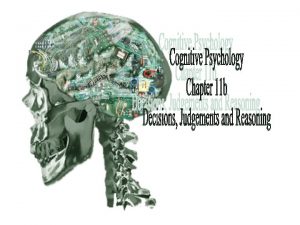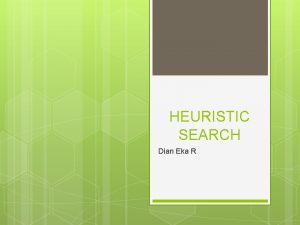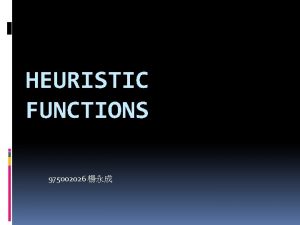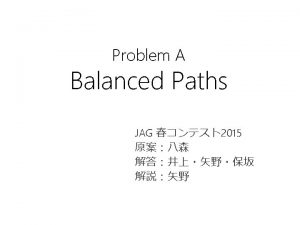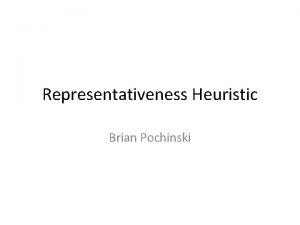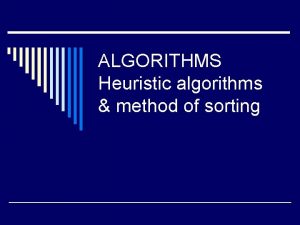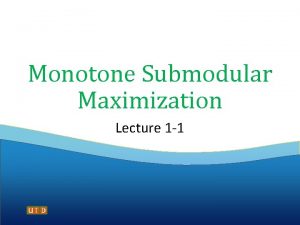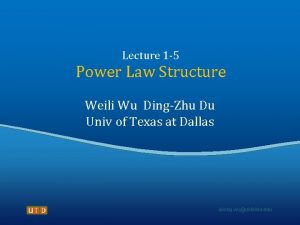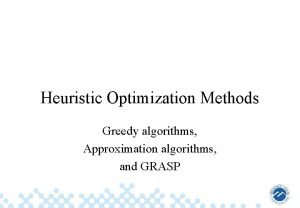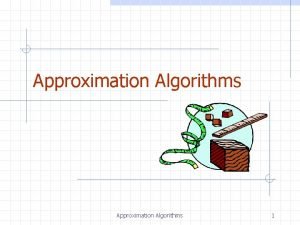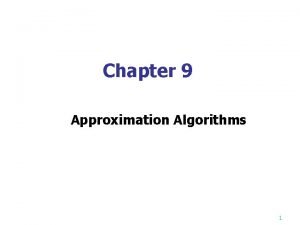Lecture 1 2 Heuristic Approximation Weili Wu DingZhu














































- Slides: 46

Lecture 1 -2 Heuristic & Approximation Weili Wu Ding-Zhu Du University of Texas at Dallas lidong. wu@utdallas. edu

An NSF Program

Algorithms in the Field (Ait. F) • Algorithms in the Field encourages closer collaboration between two groups of researchers: (i) theoretical computer science researchers, who focus on the design and analysis of provably efficient and provably accurate algorithms for various computational models; and (ii) applied researchers including a combination of systems and domain experts

• (very broadly construed – including but not limited to researchers in computer architecture, programming languages and systems, computer networks, cyber-physical systems, cyber-human systems, machine learning, database and data analytics, etc. ) who focus on the particular design constraints of applications and/or computing devices. 4

• Each proposal must have at least one co-PI interested in theoretical computer science and one interested in any of the other areas typically supported by CISE. Proposals are expected to address the dissemination of the algorithmic contributions and resulting applications, tools, languages, compilers, libraries, architectures, systems, data, etc. 5

Performance Ratio

C-Approximation • c-approximation is a polynomial-time approximation satisfying: 1 < approx(input)/opt(input) < c for MIN or c < approx(input)/opt(input) < 1 for MAX

Three Types of Problems Many optimization problems in computational social networks belong to following three types: • Minimum set cover • Maximum coverage • Maximum partition 8

Min Set Cover

Min Set Cover Red + Green 10

Greedy Algorithm 11

Observation 12

Theorem 13

Max Coverage

Max Coverage Red + Green 15

Greedy Algorithm 16

Theorem 17

Lower Bound 18

Exercises 19

References 20

Max Community Partition

Question ? How to find a Community? The definition is ambiguous. So, we can only do model-based detection. 22

Model-Based Detection Community Detection Accurate or not? Formulation (Model) Solve formulated problem 23

Model-Based Physics The Real World Accurate or not? Newton Model Solve physics problem 24

No Satisfied Community Model ! 25

Question ? How to find a Community? A simplest way is • Connection-Based Detection 26

An Example • More connections inside each community. • Less connections between different communities. • There are several ways to understand this property. 27

A Connection-Based Condition (Radicchi et al. 2004) (1) Each community has more connections inside than connections to outside. 28

A Connection-Based Condition Inside red > outside blue + outside green (1) Each community has more connections inside than connections to outside. 29

Max Community Partition Theorem (Lu et al. 2013) 30

A Heuristic

Indicator For example 32

Objective 33

Linear Constraints 34

Linear Constraints 35

Count 3 endpoints 36

37

38

References 1 2 39

Not “Prerequisites”


42

Exercises 1. Given a graph, a subset of vertices is called a vertex cover if every edge has an endpoint in the subset. The minimum vertex cover problem is a special case of the minimum set cover problem. Show that the minimum vertex cover problem has a polynomial-time 2 -approximation. 2. A vertex cover is said to be connected if it induces a connected subgraph. Show that 43

the minimum connected vertex cover problem has a polynomial-time 3 -approximation. 3. Given a graph, a subset of vertices is a dominating set if every vertex is either in it or adjacent to a vertex in it. Show that the minimum dominating set problem has a polynomial-time O(log n)-approximation. 4. A dominating set is connected if it induces a connected subgraph. Show that minimum connected dominating set problem has a polynomial-time O(log n)-approximation 44

Exercises* 5. Given a graph, a subset of vertices is called a vertex feedback set if every cycle contains a vertex in it. Show that the minimum vertex feedback set problem has a polynomial-time 2 -approximation. 45

THANK YOU!
 01:640:244 lecture notes - lecture 15: plat, idah, farad
01:640:244 lecture notes - lecture 15: plat, idah, farad Binomial expansion of partial fractions
Binomial expansion of partial fractions Vazirani approximation algorithms
Vazirani approximation algorithms Normal approximation calculator
Normal approximation calculator Diophantine approximation
Diophantine approximation Approximation de padé
Approximation de padé Tanh approximation
Tanh approximation First born approximation
First born approximation Gradual channel approximation
Gradual channel approximation Lippmann schwinger equation born approximation
Lippmann schwinger equation born approximation Linear approximation taylor series
Linear approximation taylor series Approximation scheme
Approximation scheme Contralateral slrt
Contralateral slrt First born approximation
First born approximation Sigmoid function
Sigmoid function Eulers method formula
Eulers method formula Viscous heating fluent
Viscous heating fluent Trapazoidal sum
Trapazoidal sum Tangent line approximation
Tangent line approximation Lru approximation page replacement algorithm
Lru approximation page replacement algorithm Genfit mathcad
Genfit mathcad Eddington approximation grey atmosphere
Eddington approximation grey atmosphere When does newton's method fail
When does newton's method fail Tsp approximation
Tsp approximation First approximation of diode
First approximation of diode Orbital approximation
Orbital approximation Site:slidetodoc.com
Site:slidetodoc.com Gradual channel approximation
Gradual channel approximation Nearly free electron
Nearly free electron What does approximation mean
What does approximation mean Linear approximation
Linear approximation Alternating series error
Alternating series error Steady state approximation
Steady state approximation Fully polynomial time approximation scheme
Fully polynomial time approximation scheme Empty lattice
Empty lattice Linear approximation 2 variables
Linear approximation 2 variables Taylor's theorem
Taylor's theorem Approximation
Approximation Orbital approximation helium
Orbital approximation helium What is covalent catalysis
What is covalent catalysis Poisson approximation
Poisson approximation Linearization formula
Linearization formula A storyboard is an approximation of the final commercial.
A storyboard is an approximation of the final commercial. Fffuf
Fffuf Flat earth map projection
Flat earth map projection Birge vieta method examples
Birge vieta method examples Variational shape approximation
Variational shape approximation

